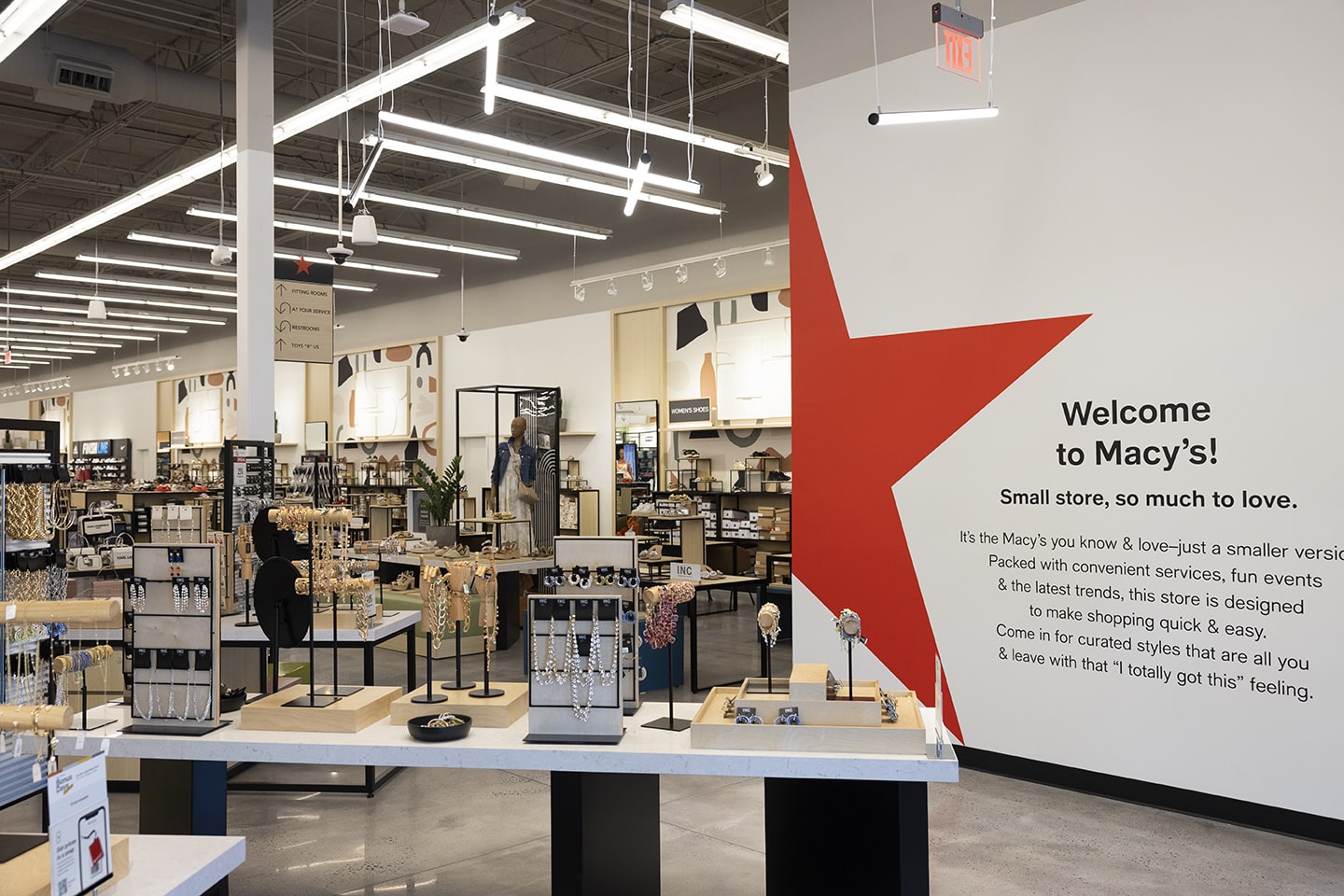Shifting Dynamics: Big Box Retailers Are Embracing Small Format Stores

From the Desk of the CEO
As the retail landscape continues to evolve, big box retailers are making a shift towards small format stores. These retail giants, once synonymous with expansive square footage and extensive product ranges, are now recognizing the need to adapt to changing consumer behaviors, escalating costs, and the rise of e-commerce. This shift represents more than just a trend, it’s a strategic pivot that reflects the future of retail.
For decades, big box stores dominated the retail scene with their massive footprints, vast selections and one-stop-shop appeal. However, as consumer habits and market dynamics have evolved, so has the need for a more tailored and convenient shopping experience. The shift towards smaller format stores can be attributed to several key factors.
One major influence is overhead. As we continue to see price per square foot rise across the country, the appeal of large retail spaces has shrunk significantly, and big, warehouse size stores have become more of a liability than an asset for even the major players in the industry. Retailers are responding by seeking out smaller, strategically located storefronts to offset overhead costs and better tailor their products/services to the local demographic.
E-commerce has also played a critical role. With consumers now expecting a seamless shopping experience across multiple channels, smaller format stores often serve as a bridge between online and offline shopping. They provide services like click-and-collect, where customers can pick up online orders at a nearby store, integrating digital and physical retail in a way that enhances customer convenience and strengthens brand loyalty.
Additionally, today’s consumers value convenience more than ever. Smaller stores, often located in more densely populated, easily accessible areas, allow for quicker trips and more personalized service. By focusing on a curated selection of popular items, these stores reduce the overwhelming choice that can sometimes accompany larger stores, making the shopping experience more efficient and enjoyable.
Several major retailers have embraced the smaller format model, each bringing its own unique approach to the concept. Target has been at the forefront of this trend with its “small-format” stores, which have been popping up in across the US, including just steps from our Woodmere, OH shopping center Eton Chagrin Blvd. These stores, typically around a third of the size of a regular Target, offer a selection of essentials, including groceries, household items, and apparel, specifically tailored to the surrounding community. This approach allows Target to tap into markets where a full-size store wouldn’t be feasible, all while maintaining the brand’s identity.
Similarly, we welcomed a smaller format World Market to Crocker Park – our award-winning shopping and lifestyle center in Westlake, OH – back in 2019. By focusing on high-demand categories and offering a more curated selection, World Market has still been able to deliver its unique shopping experience and eclectic selection of furniture, décor, and global foods, in a more compact space. This strategy enables them to penetrate different markets and reduce overhead costs while still offering the distinctive products that define their brand.
Macy’s, a name synonymous with large department stores, also recently opened a small format shop at Crocker Park. With this smaller scale, more focused concept, the retailer has pivoted toward a more bespoke shopping experience. These stores feature a mix of Macy’s private labels and popular national brands, with an emphasis on community engagement and events. This approach creates a more intimate and personalized shopping environment, aligning with modern consumers’ desire for experiences that go beyond mere transactions.
Even Walmart, the king of big box chains, has ventured into smaller format stores with its “Walmart Neighborhood Market” concept. These stores, which focus primarily on groceries and pharmacy services, are about one-fifth the size of a typical Walmart Supercenter. This allows Walmart to serve urban and suburban neighborhoods more efficiently, offering the essentials without the need for a massive retail footprint.
The shift towards smaller format stores comes with its own set of benefits and challenges. On the one hand, these stores are more cost-efficient, as they are less expensive to operate, reducing overhead costs. They also offer greater flexibility, as they can be quickly adapted to meet the needs of the local communities they serve. Furthermore, smaller stores allow for more personalized service, which can enhance customer satisfaction and loyalty.
On the other hand, there are challenges, such as inventory management. With limited space, retailers must carefully select which products to stock, which can be challenging. Maintaining brand consistency in a smaller space requires strategic planning and execution. Additionally, as more retailers open smaller stores, competition has intensified, making it harder to stand out.
As big box retailers continue to embrace smaller format stores, we can expect to see more innovation in this space. The focus will likely be on enhancing the omnichannel experience, using technology to offer personalized service, and creating stores that are more than just places to shop but also community hubs. The shift towards smaller stores is not just a response to market trends; it’s a reflection of the evolving relationship between retailers and consumers. In a world where convenience, personalization, and efficiency are paramount, smaller format stores are poised to play a crucial role in the future of retail. 

Sincerely,
Ezra Stark
Chief Executive Officer

